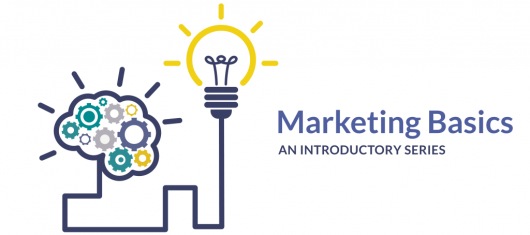Beginning a B2B marketing campaign is an exciting and unique opportunity. For some who are not familiar with the details of working in a business-to-business environment this guide provides background, potential roadblocks, and suggestions for successful campaigns.
Definition & Statistics of B2B Marketing
B2B marketing is not complicated or more difficult than other forms of marketing. However, B2B marketing is most certainly different. As a result of being different there are a number of things which must be considered and handled differently when considering B2B marketing. The best place to begin will be with a strong definition of business-to-business marketing. Once we understand this we can then look at a few statistics involving this form of marketing.
Definition
B2B (business-to-business) marketing is marketing of products to businesses or other organizations for use in production of goods, for use in general business operations (such as office supplies), or for resale to other consumers, such as a wholesaler selling to a retailer.
Study.com
This definition works well for our purposes however we can simplify a few terms and reach possibly a more easy-to-understand one. Business-to-business marketing involves the marketing of product or services between two organizations.
This is a very simple definition and yet suits our situation well. Next we’ll review a few statistics related to B2B marketing and then we’ll take this definition to define some key aspects of this form of marketing. Once we’ve identified these key aspects we’ll examine a few strategies for successfully implementing a marketing strategy for business-to-business marketers.
Some Statistics
Business-to-business marketing requires different focuses then other marketing areas. And yet there are many similarities as well. Content marketing still holds a very active and central role within B2B marketing. In fact,

Source: TopRankBlog.com
The biggest challenge B2B marketers face in regards to lead generation is generating high-quality leads (61%).
B2B Technology Marketing Community
37% of B2B marketers are using marketing automation to generate leads.
MarketingProfs
After we have reviewed those statistics there is a common theme we can see showing quite clearly. B2B marketing is challenged by identifying high-quality leads, more than half of buying decisions are made before personal contact is made, and yet ultimately only 37% are using any form of marketing automation! There is evidently a very significant missing element. But before we look into why that might be and how to solve this let us next examine the key aspects which are unique to B2B marketing.
Key Aspects of B2B Marketing
While business-to-business marketing is merely a form of marketing there are certain key aspects which define this particular marketing strategy. Marketers looking to work in business-to-business environments will need to be comfortable and confident working in the following situations.
Larger Sale Prices
Unlike business-to-consumer (B2C) marketing, when marketing within a business-to-business environments you must take into account the purchase prices for these accounts are typically much greater than you will find elsewhere. These higher purchase prices may tend to lead to fewer sales but each at a higher individual price. When working with larger sale prices involves a nurturing process for more is at stake. This nurturing process is the focus of the next key.
Longer Sales Process
With higher prices comes more hesitation. This hesitation directly leads to a longer sales process. Each account must be carefully nurtured and lead along this sales process through to a successful sale. This sales process involves multiple points of contact, meetings, and can occur over weeks, or even months. When many business-to-consumer transactions occur within minutes, hours, or at the longest, days; this stands distinctly different.
Partnerships & Brand Loyalty
B2C marketing and sales typically lead to a small purchase and possibly no ongoing interaction or relationship. However, B2B marketing is one where the longer sales process and the high price lead to a relationship between the businesses. These are not frivolous decisions made without thought or care. These relationships continue long past the initial purchase and involve ongoing communication and discussion. This leads to a very strong brand loyalty from the purchasing business.
Committee Purchases
While most B2C purchases involves a single individual making a purchase, the consumer; in B2B this purchasing decision is typically handled by a committee, or group of key players. These individuals each have a unique role and purpose and represent a different interest of the purchasing business. This committee is part of the reason why the B2B sales cycle is longer and more elaborate. The purchase-by-committee aspect also implies a lead nurturing process must engage across a variety of departments and goals.
Now that we have examined the definition of B2B marketing and a few of the key aspects of this specific type of marketing we must now turn our attention to ways in which you can successfully implement this knowledge into a specific marketing campaign. You may find several of these suggestions can be used effectively in many types of marketing. B2B marketing does indeed overlap with other formats and the suggestions shared here can be used in other marketing efforts as well.
Implementing Successful B2B Marketing
When creating your marketing strategy for business-to-business these are a few areas you should pay special attention to. Again you may be experienced in these already from your other marketing campaigns but special attention should be paid when working within a B2B environment.
Content Creation
Just as with every other type of marketing today you need to focus heavily on content creation. It’s almost wearisome to hear the same tired catchphrase used time and again, but content truly is king. Creating fresh, shareable, informative content is a cornerstone of every good marketing strategy. B2B marketing is no different. You saw the statistic earlier which showed the number of B2B marketers who were using content creation as a marketing strategy. Here another statistic in case you just aren’t completely sold that content marketing is here for the long term.
“78% of CMOs think custom content is the future of marketing.”
DemandMetric
This percentage is impressive. But how do businesses use content marketing in their B2B strategies? There are nine top goals used to measure the effectiveness of their content marketing. These are shown in the chart below.
 Source: Top Rank Blog
Source: Top Rank Blog
Notice, interestingly enough that sales actually comes in at the bottom of the list. B2B marketers define 8 other goals as more important than the actual sale. This underscores the importance of the many different aspects of B2B marketing beyond simply landing a sale. This also clearly demonstrates how B2B is different and has different key aspects (as mentioned above).
So if content creation is important in the B2B marketing strategies, we should explore how to successfully implement this within your campaign. First, you will need to follow the basics of creating a marketing campaign, just as you would for any other campaign. This involves, identifying your target audience, determining your keywords and then organizing your content. There’s also this excellent guide to help you with this entire process; it’s a thorough article so be prepared to learn when you are ready to begin reading.
Creating your content is the first major part of a successful B2B campaign. Writing this content should always remain focused on the goals we’ve outlined above. Don’t try to turn every post into a simple call-to-action purchase page. With this type of marketing you are looking more to build your brand awareness, generate the beginning of a long-term relationship, and engage your potential customers. Truly, you want to nurture them along a sales process; not jump directly into a purchasing situation.
Social Media
The second aspect of a strong B2B marketer’s strategy involves the rather obvious social media aspect. Every business must use social media within their marketing campaign and B2B is certainly no different. Social networks are the modern version of radio or television outlets found in old marketing. But more than just a platform for broadcasting a message as yesterday’s technology allowed, today social media allows for brand engagement between the buyer and the seller. And businesses focused on marketing to other businesses must take advantage of this medium as well. But again with a little different angle.
B2B vs B2C Social Media
Social media from a corporation’s perspective is a unique opportunity to engage directly with decision makers. Remember, earlier we discussed that most purchases are handled by committee when working within a B2B environment. But each committee is composed of individuals, and each of those people will typically be on one or more social networks. This means as a brand you need to be able to engage with each of these decision makers where they are.
Jay Baer, one of today’s leading content marketing strategists says, “social media can be MORE transformative for a B2B company than a B2C company.”
He goes on to say, “Are there differences between B2B and B2C social media campaigns? Of course. But those differences are at the tactics layer, not the strategy layer.”
http://www.convinceandconvert.com/social-media-strategy/crushing-the-myth-of-b2b-social-media/
Social media is important regardless of your target audience. Social media requires consistency, dedication, and a willingness to engage. You need to respond to questions, respond to complaints, and offer helpful advice…including things that do not directly relate to your products or services. You must step out of your sales and marketing role and interact with your target audience on a variety of topics. Show interest and exchange more than just marketing materials. B2B users who see a tweet, are more likely to visit a company’s website later.
 Source: B2B Content Marketing Trends, Content Marketing Institute/MarketingProfs
Source: B2B Content Marketing Trends, Content Marketing Institute/MarketingProfs
Social media platforms are an important way to share the information you’ve created during the content creation step. Don’t ignore posting your content because you are in a B2B environment.
Campaign Construction
Understanding the unique way that B2B marketing involves a much longer sales process, a more focused relationship, and a strong brand loyalty will affect how you structure your marketing campaigns. When you begin your campaign construction you must take time into account. This means don’t schedule your beginning to ending campaign workflow to last a single week. Don’t even construct your campaign on a two week schedule. B2B marketing campaigns should be structured over a minimum of 4 weeks. You can have branches of your campaign that end sooner should you have an interested lead ready to move forward faster but your primary campaign should unfold over a much longer time period than a traditional B2C campaign.
“88% of B2B companies plan on implementing marketing automation in their organizations by the start of the 2017-2018 financial year.”
B2B Marketing
This massive focus by B2B marketers demonstrates the priority that marketing automation holds within their organization. Marketing automation platforms are ideal for creating a very long automated drip flow campaign. These campaigns are useful not only for identifying new leads over a longer period of time but also quite good at maintaining relationships with existing customers. When you recognize the importance of brand loyalty to B2B marketing and the power of an ongoing relationship you create campaigns that also target your existing customer base. This is one way in which you can get ahead with your B2B marketing. Because marketing automation is still a very fast-growing technology many B2B have not yet tapped fully into the potential of their marketing automation software.
Also, B2B marketers that use marketing automation have seen incredibly high improvements in their lead generation percentages: “Businesses using marketing automation to nurture prospects see a 451% increase in qualified leads.” (Hubspot). It seems hard to believe that such a high percentage increase is possible but it’s been proven time and again. Since B2B is focused on providing a brand loyalty and longterm relationship, marketing automation is the perfect tool for this. This basic infographic will show you how to structure a beginner drip flow campaign quickly.
Campaign construction does not have to be done only in marketing automation software. While many statistics prove the tremendous value of using these platforms you can still create your campaigns in a variety of ways and using a number of tools. The important part to remember is B2B marketing takes time and your campaigns should be structured to offer a strong, nurturing lead process over a longer period of time than B2C.
Partnerships
We’ve touched on this a few times in previous sections but it’s important to keep in mind that B2B marketing is more about building partnerships than it is about making a quick sale. B2B marketers must be looking for and encouraging brand loyalty and long-term partnerships. This can be done using a marketing automation tool as mentioned above. This software can be used for marketing to new leads as well as continuing to build your relationship with existing customers. Different campaigns, different outcomes, but the same software. Building partnerships with B2B marketing is important for several reasons.
Trust
First, we recognize that B2B sales generate a much higher price per sale than other industries. With these larger purchases the ability to trust the business you’re working with is important. You must be able to have faith that the quality of the product or service will meet your standards and that the company will stand behind their product and ensure your success. This is a trust-based relationship, and for good reason. Once that trust is established the partnership can continue for many years to come.
Support
Second, B2B marketing must focus on providing more than merely a product or service for sale. B2B must focus on providing a sense of security to the purchaser. Building a strong brand loyalty often means going the extra mile in supporting your existing customers. Doing the unexpected and looking for ways to improve the relationship. This is a very pro-active position and does require a dedication of time as well as a priority placed on listening.
The best way to be pro-active in providing support and service is by first listening to the needs of the customer. Listening not just on direct engagements (phone call or support ticket) but also listening on social media where the customer may not even direct the message to you. This pro-active approach to support is fundamental to building brand loyalty.
Quality
If your B2B marketing is not backed by quality products, engaging support, and a fundamental assurance of reliability then you will not be able to build a lasting partnership. However, when businesses sense that you place quality as a priority this will become quickly evident and will encourage brand loyalty.
Loyalty Test
One of the best ways to get a quick feel on how your B2B clients are feeling about your partnership is through the use of a one-question Net Promoter Score (NPS). You’re probably quite familiar with this strategy already but in case you’re not. The NPS is a single one question form that helps to determine your customer loyalty metric which can be used to gauge a company’s customer relationships.

Implementing something like a loyalty metric or test helps to ensure that you stay on target and on point with your marketing. You want to make sure you are building those relationships and partnerships and establishing a customer base that will be loyally devoted to your brand.
Purchases
The purchase process in B2B is vastly different from other marketing verticals (as we’ve discussed earlier in this article). So perhaps a good place to begin is by looking at some sample purchase cycles as they specifically relate to B2B.
 Source: Inflexion Point
Source: Inflexion Point
And in this process they are significantly farther along this process before they ever reach out to you. This means your content (see above), your social media impact (above), and your campaign funnels (above) must all be organized fully to assist and help this process that occurs before you ever come into direct contact with your leads.
“B2B customers are 65-90% of the way through the purchase decision process before they contact your firm!”
Heidi Cohen
While this purchase process may seem tricky and at times convoluted, the case can be made that in B2B marketing you have the best possible situation for using marketing automation and other tools to perform tasks, organize campaigns, and nurture potential leads with little to no personal time spent until they reach a qualified lead status. Of course there’s nothing wrong with early personal contact, but when time is your most valuable resource and your limiting factor you need to be smart in your approach. And as we’ve shared before (power of personal) – automated marketing can still be personal marketing.
Once you have nurtured your B2B leads into customers you should never neglect the potential for future purchases. As everyone in marketing knows, it is far easier to keep a customer than to gain a new one. This means focusing not on a single purchase but on the lifetime potential purchases from each customer. Your B2B marketing campaign must consider the lifetime value of each customer and what it will require to build a strong partnership, brand loyalty, and ultimately repeat purchases.
Takeaway
Business-to-business marketing is different than other types of marketing. There are several unique characteristics which can present a challenge to marketers looking to shift their focus to B2B marketing. However, once you recognize these characteristics and begin to implement the different tactics above in your B2B marketing you’ll find you are well-equipped to be an excellent B2B marketer.
If you’re looking for a marketing automation tool which can support and grow your B2B marketing efforts we recommend you take a quick look at Mautic, which provides cutting-edge features, an intuitive interface and a solid platform to help you turn suggested marketing tactics into actionable campaigns, informative landing pages, and ongoing email marketing.







